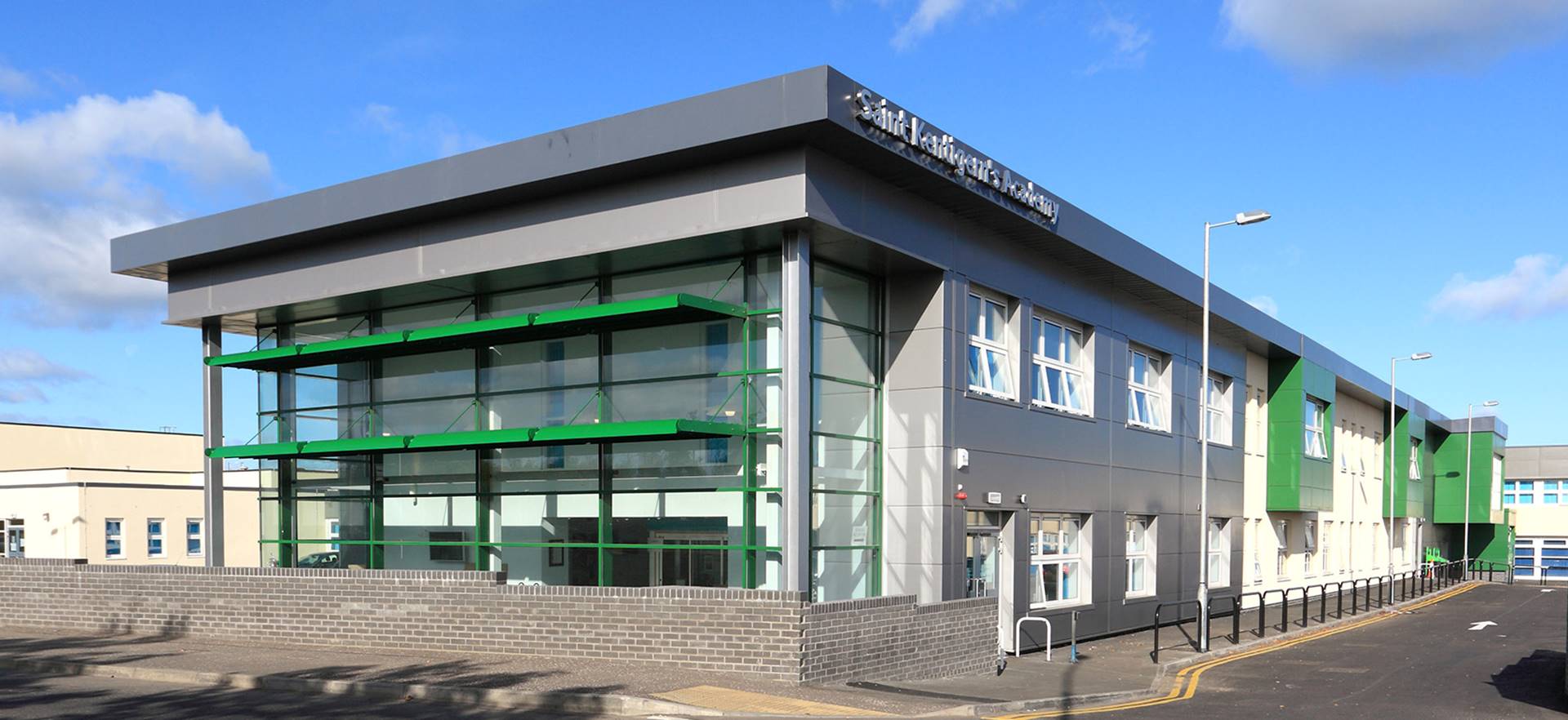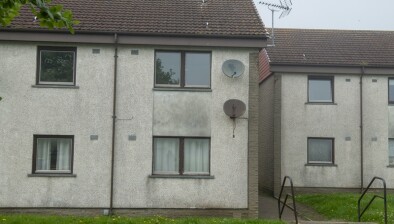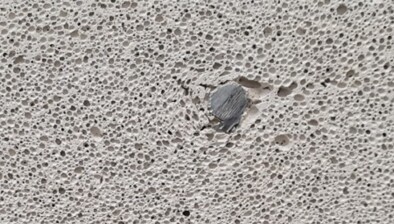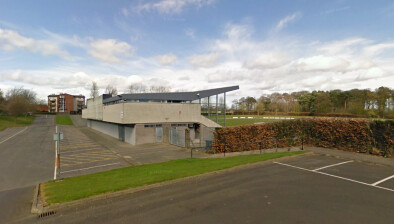Schools impacted by RAAC revealed by councils

St Kentigern’s Academy in Blackburn
At least 30 schools in Scotland found to contain the potentially dangerous reinforced autoclaved aerated concrete (RAAC) have been named by councils.
The Scottish Government confirmed last week that work is underway to fully understand the presence of the material after it was found in at least 35 schools across the country.
The lightweight form of concrete used in the construction of schools, colleges and other buildings from the 1950s to the mid-1980s is being assessed after it was linked to the collapse of the roof at Singlewell Primary School in Kent in 2018.
Now details from 14 local authorities have revealed most of the impacted schools, with eight coming from Edinburgh alone.
Aberdeen said seven schools across the local authority included the material, with another five in West Lothian. Five councils, including Glasgow, were yet to respond to requests for figures.
Number of schools with RAAC
- City of Edinburgh Council (8 schools) – Pentland Primary School, Fox Covert Primary School and St Andrews Fox Covert RC PS (one site), Colinton Primary School, Currie High School and Lorne Primary School, Cramond Primary School and Trinity Primary School.
- Aberdeen City Council (7) – Abbotswell Primary, Cornhill Primary, Hazlehead Academy, Northfield Academy, Quarryhill Primary School, St Machar Academy, Westpark School.
- West Lothian Council (5) – St Kentigern’s Academy in Blackburn, Balbardie Primary School, Windyknowe Primary in Bathgate, Riverside Primary and Knightsridge Primary in Livingston.
- Dumfries and Galloway (4) – Laurieknowe Primary School in Dumfries, Carrutherstown Primary School in Nithsdale, Dumfries Academy in Dumfries and Gatehouse Primary School in Gatehouse of Fleet.
- Dundee City Council (2) – Ardler Primary School and St Fergus Primary School.
- Aberdeenshire Council (2) – Mackie Academy, Westhill Academy.
- Highland Council (2) – Charleston Academy, Nairn Academy.
- Moray Council (1) – Forres Academy.
- Argyll and Bute Council (1) – John Logie Baird Primary School in Helensburgh.
- East Lothian Council (1) – parts of Preston Lodge High School, Prestonpans.
- Perth and Kinross Council (1) – Perth Grammar School.
- North Ayrshire Council (1) – Ardrossan Academy
- Inverclyde Council (1) - school has not been named
- North Lanarkshire Council (1) - school has not been named
West Lothian Council said it has taken a proactive approach to address issues around RAAC roofs over the past two years, and has already carried out detailed surveys of its school estate.
A spokesperson said: “We have carried out detailed proactive surveys of our school estate and specialist engineers were brought in to offer expert advice on addressing the issue. All areas with RAAC roofs in schools have been closed and staff and pupils relocated. Continuity of education has been at the forefront of all the decisions that have been made, minimising disruption to the staff and pupils.
“Despite significant continued pressure on the council’s revenue and capital budgets, major investment has been allocated towards dealing with RAAC. This has already enabled work to be completed in a number of properties, with plans in place for all the remaining buildings”
Details of affected schools include:
- Balbardie Primary School in Bathgate. RAAC is present in a school extension. Work on a replacement roof for this area is ongoing, with £1.8m fully funded by West Lothian Council.
- Riverside Primary in Livingston. A bid has been submitted to the Scottish Government’s Learning Estate Investment Programme for funding, with a decision expected shortly.
- Windyknowe Primary in Bathgate. RAAC is only present in the nursery area and a small section of the first floor. Replacement roof works for this area are ongoing, with £1.3m fully funded by West Lothian Council.
- Knightsridge Primary in Livingston. The school building was temporarily closed on November 2022. A £6.7m programme of work began in December 2022 and is ongoing, fully funded by West Lothian Council.
- St. Kentigern’s Academy in Blackburn. A proposal to demolish the parts of the school affected and construct a new wing has been approved by Council Executive, with the potential costs estimated at up to £35m. The council has committed £20m to the works and an approach has been made to the Scottish Government regarding the rest of the funding required.
A spokesperson for East Lothian Council said: “Inspection works confirmed the presence of RAAC in the construction of some, but not all, parts of Preston Lodge High School, Prestonpans. As a result of faults identified in a limited number of areas in which the RAAC is present, it was decided last term that some parts of the school building would be closed as a precautionary measure, with temporary arrangements in place to maintain learning and teaching such as using alternative accommodation within the school’s catchment area for some lessons. Discussions have been taking place around a possible solution and the council will issue full details to staff, parents and pupils as soon as it is able to do so.
“Survey work has established that RAAC is present in the dining hall at Ross High School, Tranent. We would like to reassure the school community that independent specialist engineers have confirmed that the dining hall remains safe to use. The condition of the RAAC which is present at Ross High will be closely monitored to establish whether any work might be required in future.
“Survey work has confirmed that RAAC is not present in any other East Lothian Council school buildings.”
The Highland Council said it has written to parent councils of its affected two schools and has appointed a contractor to carry out the works required to allow reoccupation of the affected areas as soon as practicable.
Chair of the Housing and Property Committee, Cllr Glynis Campbell Sinclair, said: “The safety of our pupils and staff is of utmost priority. I am confident the council has taken the necessary steps at an early stage to establish the condition of the RAAC components in line with current guidance and best practice and carry out all essential works to allow reoccupation of the affected buildings. The further remedial works that are required to be completed within the next year are now underway.”
A spokesperson for Midlothian Council has confirmed that no RAAC has been found in recent surveys of its schools estate.
A spokesperson for Moray Council said designs for mitigation works at Forres had been completed and a contractor had been selected to carry out the works shortly.
Stirling Council said no buildings were identified as containing the material in a desktop survey but a full inspection programme of all its educational properties would be carried out.
Comhairle nan Eilean Siar Council said it had also undertaken a desktop study and was confident RAAC had not been used in any of its school estate.
A spokesperson said to provide 100% certainty, however, further surveys would be carried out over the coming months at schools and other buildings constructed within the stated timescale of use.
East Dunbartonshire said no schools had been identified as containing RAAC to date but further investigations had been ordered to confirm the position across the estate.
Councils said no schools were impacted in Fife, Angus, the Orkney Islands, Renfrewshire or East Renfrewshire.
Education secretary Shirley-Anne Somerville said 37 schools were affected and that ministers had known since last year.
She said: “This has of course been an issue that the government has been aware of for some time, and that’s why action has been taken, and has been for some time, for example way back in July 2022 Scottish Government officials made contact with the Scottish heads of Property Services and directors of education in Scotland to share information on RAAC.
“I can completely appreciate why there is public concern on this, particularly given the way that announcements have been handled down in England.
“But I can reassure the member that we appreciate that public concern means we need to be as open as possible, as we can be, for this because parents and staff are concerned about this issue.”
The announcements come as School Estates Statistics found that the proportion of schools reported as being in good or satisfactory condition has increased to 90.7% (90.4% in 2022). This is 29.6 percentage points higher than in April 2007 (61.1%).
The publication also showed that the proportion of pupils educated in schools in “poor” or “bad” condition has decreased from 36.6% of all pupils (around 257,000) in 2007 to 8.5% of all pupils (around 60,000) in 2023 although there has been a slight increase since last year (8.3% of pupils in 2022).
Since 2007-08, 1,098 school builds or substantial refurbishment projects have been completed (includes those with cost of at least £500,000 for primary and at least £1 million for secondary and special).

















